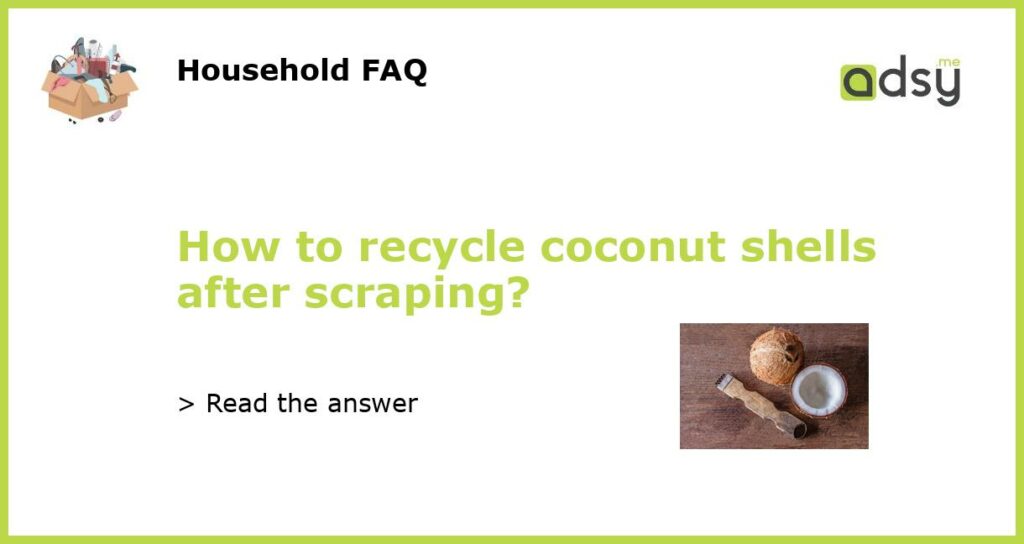Coconut shells are a widely used by-product in the coconut industry. They are used for making various handicrafts, activated carbon, and fuel. However, after the scraping process, coconut shells are typically discarded as waste. Fortunately, there are several ways to recycle coconut shells after scraping, which can benefit both the environment and the economy. In this article, we will discuss five ways to recycle coconut shells after scraping.
Make eco-friendly household items
Coconut shells can be used to make several eco-friendly household items such as bowls, cups, and spoons. This process involves cleaning and polishing the shell, and then cutting and shaping it into the desired form. These items are not only eco-friendly but also look stylish and unique. Several small businesses have emerged that sell such handmade items, making them an excellent source of income for entrepreneurs.
Produce activated carbon
Coconut shells are an excellent source of activated carbon due to their high carbon content and low ash content. Activated carbon is used for several applications, including water purification, air filtration, and industrial processes. Coconut shell activated carbon has excellent adsorption properties that make it highly effective for removing impurities from liquids and gases. Several small-scale businesses have emerged that produce activated carbon from coconut shells, providing employment opportunities for locals.
Generate biofuel
Coconut shells can also be converted into biofuel through a process called torrefaction. This process involves heating the shells in a low oxygen environment, which transforms them into a carbon-rich fuel. The resulting biofuel can be used in stoves, boilers, and power plants, making it an excellent alternative to fossil fuels. Additionally, using biofuels reduces greenhouse gas emissions, making it an eco-friendly alternative to traditional fuels.
Create sustainable landscaping materials
Coconut shells can also be used to create sustainable landscaping materials such as mulch and fertilizer. The shells are ground into small pieces and used as a mulching material, which helps retain moisture in the soil and regulates soil temperature. Additionally, the shells can be composted and used as a fertilizer, providing a sustainable source of nutrients to plants. Using coconut shell mulch and fertilizer reduces the need for chemical fertilizers, promoting natural plant growth.
Use coconut shells for artistic purposes
Finally, coconut shells can also be used for artistic purposes such as carving and painting. Talented artisans can create beautiful sculptures, jewelry, and wall art using coconut shells. Additionally, coconut shells can be used to make musical instruments such as tambourines, making them an excellent source of creative expression. These artistic endeavors not only promote creativity but also provide income-generating opportunities for artisans and culturally enrich the community.






